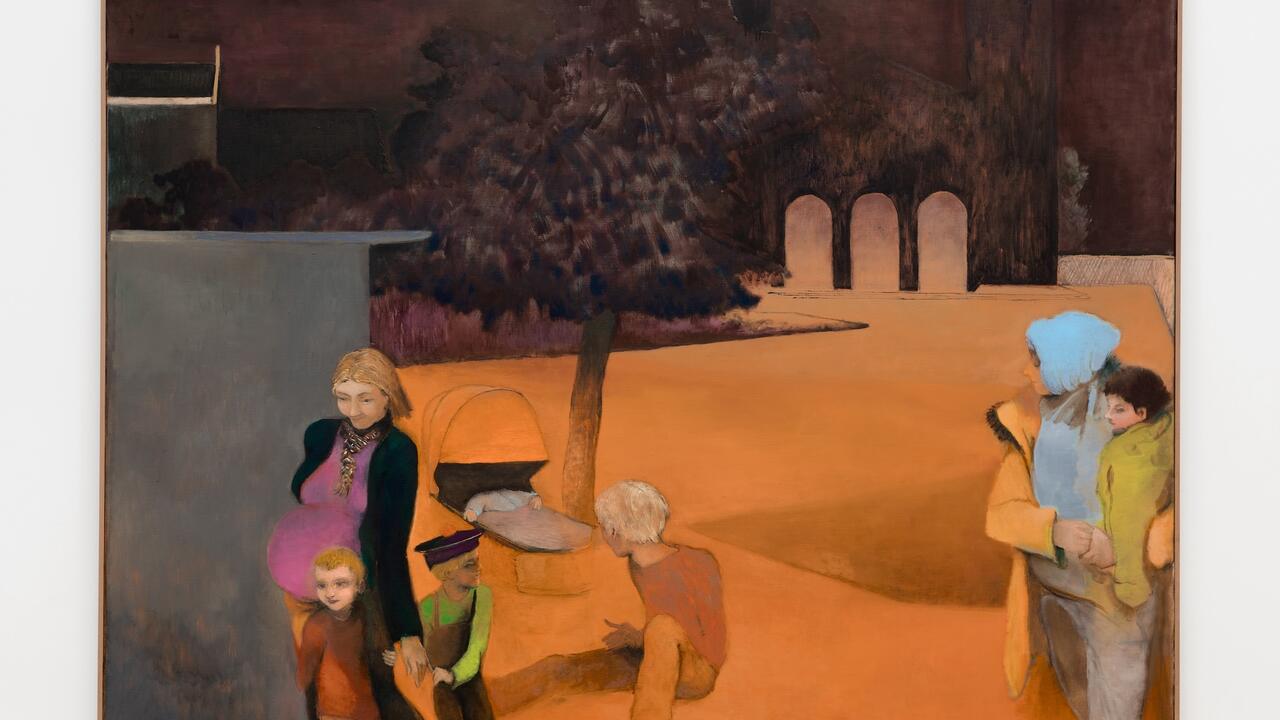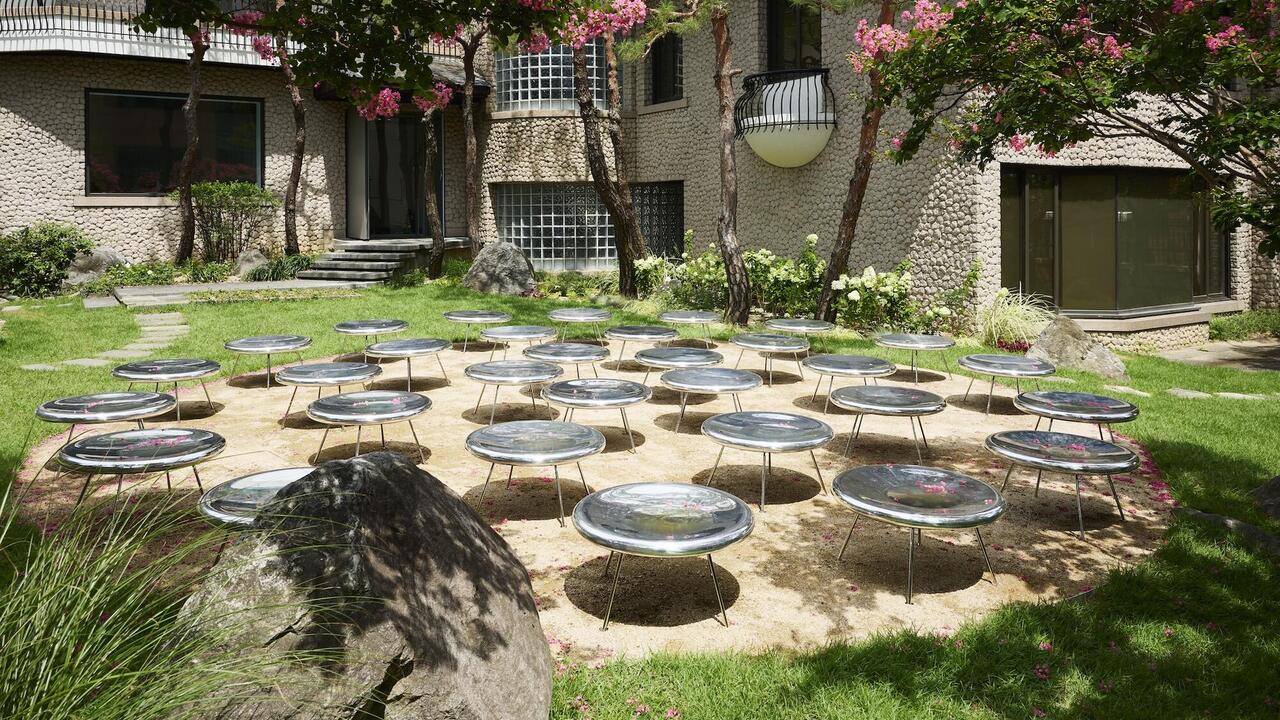Teresita Fernández Investigates the Caribbean’s Colonial Past and Natural Forces
At Lehmann Maupin, New York, the artist envisions new ways of understanding the complex and violent history of the region through weather phenomena
At Lehmann Maupin, New York, the artist envisions new ways of understanding the complex and violent history of the region through weather phenomena

‘Maelstrom’, Teresita Fernández’s solo show on view at Lehmann Maupin in New York, invokes images of natural disasters as metaphorical signifiers for the naturalization of Western colonialism. Through a series of immersive installations and large-scale sculptures that focus on the Caribbean as the initial locus for coloniality, Fernández defies dominant spatial paradigms that designate the region and its people as marginalized and dispossessed, engaging the cyclically destructive and regenerative forces of nature to theorize more complex and nuanced ways of knowing.

Suspended in the centre of the gallery is Rising (Lynched Land) (all works 2020), towering above the floor. The sculpture resembles a life-size palm tree – almost 5 m tall – comprising a slender trunk of scorched wood, fronds of patinated copper, and a burlap sack that encompasses hidden roots. It is displaced, seemingly in the process of translocation, hung from the ceiling by a thick rope. Black Beach (Unpolished Diamond), a series of three large wall panels, seems to orbit the central tree, with dynamic compositions that generate centripetal force, setting the room in motion. Shards of wood and fragments of charcoal meticulously strewn on aluminum panels bring to mind fossilized bones resurrected from primordial burial grounds, or beaches in the wake of a storm. The surface oscillates between opacity and reflection: layers of material applied with varying densities and curvilinear slivers where the mirror shines through unobstructed, allowing us to catch a glimpse of ourselves.

In Archipelago (Cervix) – a wall sculpture made from solid charcoal in the downstairs gallery – Fernández reconstructs the Caribbean islands as a conjoined circular continuum. This work seems to emphasize the malleability of space through both natural and artificial means. Continents drift, poles shift, climate changes the contours of the land. European colonizers altered territorial logic by way of the genocidal erasure of indigenous populations and seizure of lands, uprooting diverse ethnolinguistic communities from Africa via the transatlantic slave trade, and homogenizing native plant life into unsustainable cash crops cultivated for external markets. Besides mobilizing one of the main forces of human-induced climate change, these large-scale transformations catalysed social hierarchies bound with basic notions of body politic and individual liberty.

In contrast, Hurakán is a collection of 20 intimately-sized, mixed-media-on-wood collages that stretch around the room along the same horizontal line. Named after the Taíno deity who presides over the weather, each individual work references a specific storm in its subtitle – for example, Hurakán (Katrina) – citing the practice of using strictly female names to designate violent weather until the 1980s. In doing so, Fernández underscores imperial legacies of control over women’s bodies and reproductive rights that endure in experimental testing of contraceptive drugs and eugenics-based sterilization in Puerto Rico. Sterilization was legalized on the island in 1937, ‘precisely when women’s labor was the only source of income for thousands of Puerto Rican families’, as Ana María García explains in her poignant 1982 documentary La Operación (The Operation) – part of the research material compiled by the artist in ‘Maelstrom: A Visual Essay’, an online resource offering the opportunity for viewers to deepen their understanding of the show’s intellectual framework.

Between the 1930s and 1970s, approximately a third of Puerto Rican women were sterilized, often unknowingly and without being informed of the procedure’s irreversible implications. Fernández’s trenchant citation to this coercive project – which was supported and partially funded by the US government – calls attention to the weaponization of healthcare as a form of social control. Today in the US, forced sterilizations continue to be performed on immigrants in custody and incarcerated women. The artist bestows upon us the gift of knowledge, extending an invitation to decolonize our minds.
'Teresita Fernández: Maelstrom' is on view at Lehmann Maupin, New York, through 23 January 2021.
Main image: Teresita Fernández, 'Maelstrom', 2020, exhibition view, Lehmann Maupin, New York. Courtesy: the artist and Lehmann Maupin, New York, Hong Kong, Seoul, and London; photograph: Elisabeth Bernstein


















